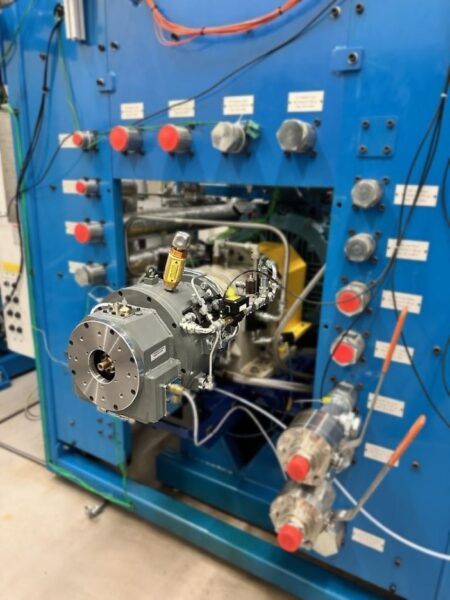Radiography has long been a cornerstone of non-destructive testing (NDT) in aerospace. Inspecting the internal structures of aircraft components for potential defects is critical to ensuring safety and reliability. Traditionally, this has been accomplished using radiographic film – a method known for its proven reliability and accuracy.
However, advances in digital radiography offer faster, more cost-effective solutions. Yet, despite these benefits, the aerospace industry has still not fully embraced digital radiography. So, what are the pros and cons of current radiographic solutions? And what could the future of aircraft inspection look like with the advent of flexible digital X-ray film (DXF)?
Traditional radiographic film has been the industry standard for decades. Its reliability and accuracy in detecting defects are well-established, giving engineers and inspectors confidence in the results. More importantly, the flexibility of radiographic film makes it ideal for inspecting objects with complex geometries – such as curved surfaces and tight spaces commonly found in aircraft structures.
The disadvantages of radiographic film are also well understood. Using film is time-consuming and labor-intensive. It involves the use of light-proof envelopes, exposure to X-rays and dark rooms. There are more overhead costs and the subsequent cost of digitizing the film for storage – or the cost of physically storing the film for up to 60 years. The total cost is surprisingly high.
Digital radiography pros and cons
Digital radiography (DR) has emerged as a promising alternative to traditional radiographic film. The technology offers several advantages.
Images can be captured and analyzed almost instantaneously, enabling faster decision-making and reduced downtime, while eliminating the need for film and chemical processing reduces material costs. Additionally, digital images can be stored electronically, saving on physical storage space and associated costs
Digital images can also be enhanced and manipulated using software tools, improving defect detection and analysis. Advanced algorithms and artificial intelligence (AI) can further enhance image quality and help automate the detection of potential issues
However, the aerospace industry has been slow to adopt digital radiography. Several factors contribute to this reluctance including a high initial investment and strict regulatory and certification hurdles.
Possibly one of the most significant challenges in going to full DR is the fact that DR panels are rigid, square, thick and heavy. They do not offer the useability of radiographic film in terms of form factor and flexibility. Where film can be bent around curved objects and squeezed into tight spaces, DR panels can’t – limiting its use to mainly flat objects, with sufficient space around the object to use square ridged detectors
Flexible digital X-ray detectors
One of the latest innovations in DR holds the promise of overcoming many of the barriers to adoption. Digital X-ray detectors combine the benefits of digital imaging with the flexibility of traditional radiographic film, making them ideally suited for aerospace applications. DXF detectors offer several advantages over conventional digital detectors.
DXF detectors can more easily be wrapped around complex geometries, eliminating image distortion from using flat panels. This is particularly useful for inspecting curved and irregular surfaces found in aircraft components.
They offer high spatial resolution and sensitivity, enabling the detection of fine cracks and other critical defects with precision. DXF detectors produce digital images that can be quickly analyzed.
In addition, although the initial cost of DXF detectors is higher than that of radiographic film, they reduce the ongoing labor and overhead costs associated with radiographic film, resulting in a lower total cost of ownership.
The growing use of composite materials
The aerospace industry is increasingly turning to composite materials due to their superior strength-to-weight ratio, corrosion resistance and design flexibility. These materials, including carbon fibre-reinforced polymers and glass fibre-reinforced polymers, are challenging to inspect because of their layered structures and potential for hidden defects, such as delamination and voids.
DXF is potentially well suited for inspecting the more complex shapes possible with composite materials. Its ability to conform to complex shapes and its high resolution has the potential to detect defects that might be missed by traditional methods.
Next generation radiography
Implementing DXF in aerospace inspections involves overcoming initial challenges related to technology adaptation and cost. However, the long-term benefits make it a worthwhile investment.
Moreover, the integration of DXF with existing digital systems in aerospace manufacturing and maintenance will streamline workflows and improve data management. For instance, digital images can be easily shared across departments and locations, facilitating collaborative analysis and decision-making.
The reluctance to transition from traditional radiographic film to DR is mainly driven by the physical flexibility of radiographic film and the lack of flexible digital X-ray detectors. However, the advent of flexible digital X-ray detectors presents a case for change. By combining the proven reliability of traditional methods with the speed, efficiency and capabilities of DR, the detectors represent the future of aircraft inspection.
Embracing this new generation of inspection technology will require overcoming initial hurdles, but the long-term benefits in terms of safety, cost savings and operational efficiency are substantial. As the aerospace industry continues to evolve, flexible digital X-ray detectors could play a pivotal role in ensuring the integrity and safety of aircraft components.
This innovative approach not only addresses the traditional limitations of radiographic film but also meets the evolving needs of modern aerospace engineering, particularly with the growing use of composite materials.





